An exceptional garden employs bold and subtle concepts such as rhythm, formal and asymmetrical balance, texture, shape and color to give it a personality. It speaks to its visitors on many levels, both conscious and subconscious. A bubbling fountain may give it a voice and movement. On another level movement may be implied and perceived while the garden in fact remains still. Mastering the illusion of implied movement is guaranteed to set your garden apart from those of your neighbors. Here’s how to start.
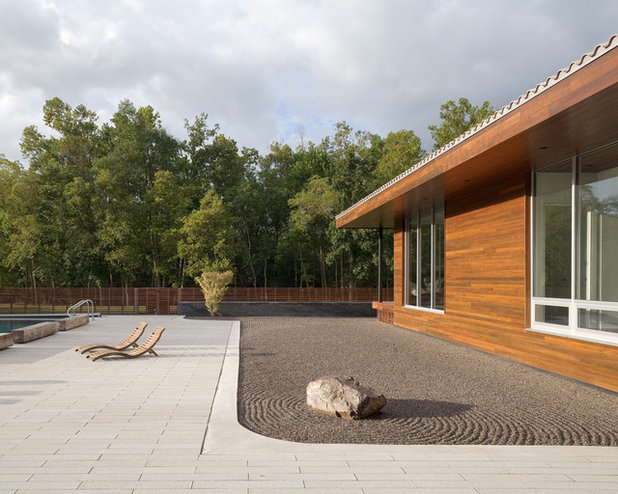 Stone and Sand
Stone and SandAsian-style gardens quickly come to mind in a discussion of implied movement. In fact, the Japanese have employed this technique for hundreds of years in their Zen gardens.
Here finely crushed stone has been raked into patterns simulating water currents flowing, even circling stone formations that represent islands in the sea.
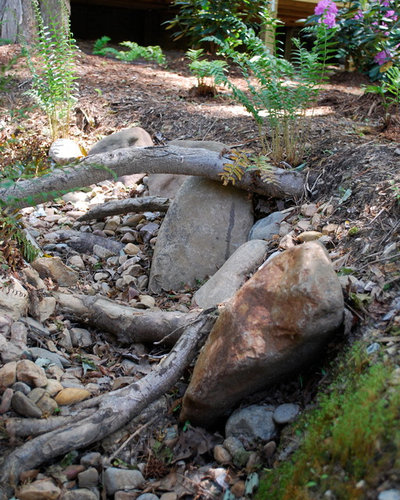
Jay Sifford Garden Design
Dry creek beds are another way to introduce implied movement. A day trip to explore streams and rivers will yield valuable insight for designing a realistic-looking creek bed. Be sure to notice how the water circulates around the rocks as well as how it has carved out its path. Vertical rocks wedged between unearthed tree roots record the powerful movement of nature.
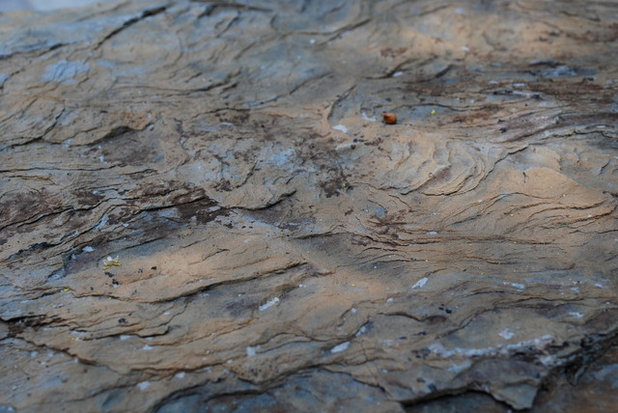
Jay Sifford Garden Design
A trip to a good stone yard can be a morning well spent. Careful examination of stone can reveal subtle details that can take your garden to the next level. Notice the water marks carved into this boulder and how they record history. Small details such as these create a rich garden experience.
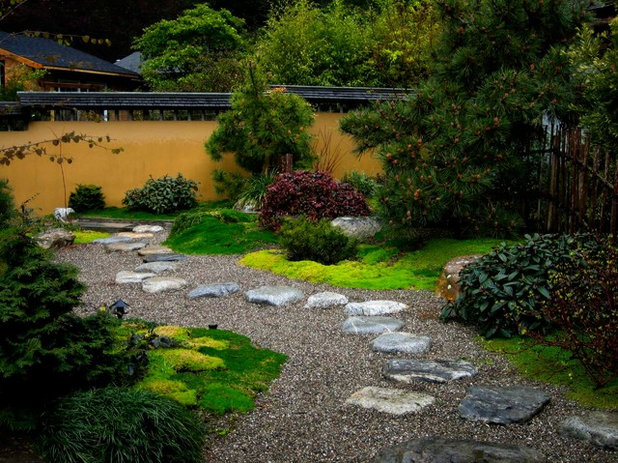
Facciuto Landscape Design & Construction
PathwaysWell-designed garden paths, particularly those laid out in serpentine or zigzag patterns, imply movement because they entice the eye with a sense of journey in a way that linear paths cannot. Not all of the route is visible at once, thus creating a feeling of seductive mystery. Where the eye is drawn and enticed, the body always follows.
The stone pathway shown here does the visual work for us. The gravel path is reinforced with aged stepping-stones, creating a powerful image in the midst of this peaceful garden. The contrast is profound.
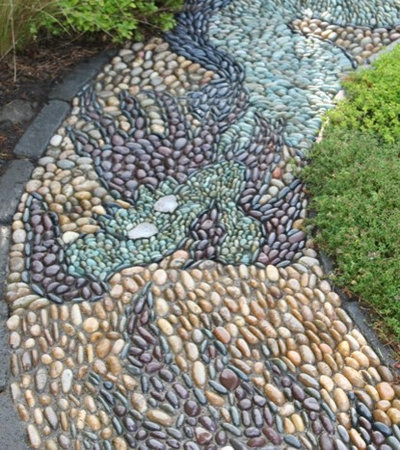
Seasons Garden Design LLC
This mosaic path of mortared stone is a case study in fluid movement. Notice how the lines in the design move the eye downstream in a bold yet whimsical manner. Let your imagination run wild with a project such as this. Your garden will likely be a better place because of it.
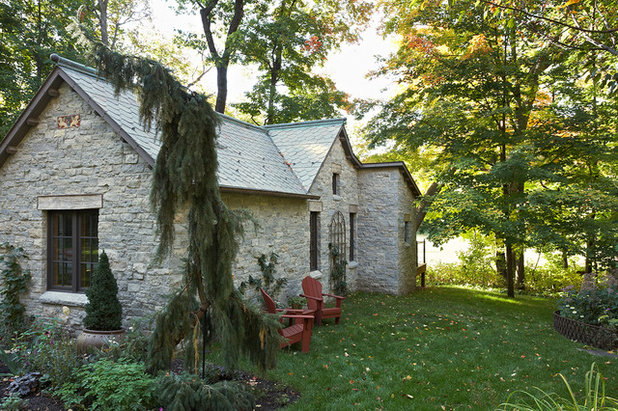
Murphy & Co. Design
PlantsWeeping and contorted trees, as well as appropriately pruned Japanese maples, can add an unexpected dose of implied movement to your garden. Picture the conifers that cling to the rocky ocean cliffs of the Pacific Northwest. These ancient trees have been blown, twisted and shaped by the wind over centuries. The implied movement captured in these trees records both history and nature’s fury.
By visiting specialty nurseries, you can re-create this look in your garden. Trees to consider include
Japanese white and
black pines (
Pinus parviflora and
Pinus thunbergii, USDA zones 4 to 8),
Hinoki false cypress (
Chamaecyparis obtusa, zones 5 to 9) and various cultivars of
Norway spruce (
Picea abies cvs, zones 2 to 8).
Specimen trees chosen for this purpose must be handpicked, not ordered from Internet sources, because each tree has its unique shape. Taking this step can save you years of training, shaping and pruning.
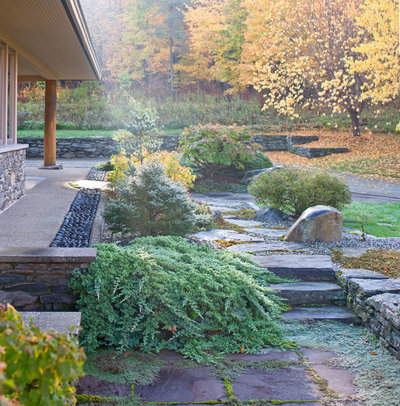
Cynthia Knauf Landscape Design Inc
Don’t forget about spreading and mounding shrubs, such as this
Japanese garden juniper (
Juniperus procumbens ‘Nana’, zones 4 to 9). A well-placed specimen can add a sense of movement as it methodically climbs over a low stone wall.
The vignette shown here is particularly pleasing because the thyme growing between the pavers mimics the shrub’s color and texture, giving it the illusion of dripping and puddling like spilled green paint running into the cracks. A memorable garden creates vivid images like this that will remain long after plant names are forgotten.
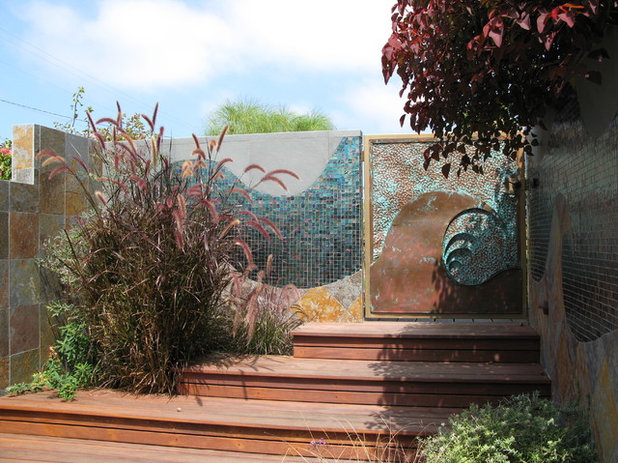
debora carl landscape design
ArtNo great garden is complete without at least one piece of art. This San Diego garden installation borrows the movement of the nearby ocean and transports it into a courtyard setting. Art that speaks to a garden’s locale can give the space its identity.
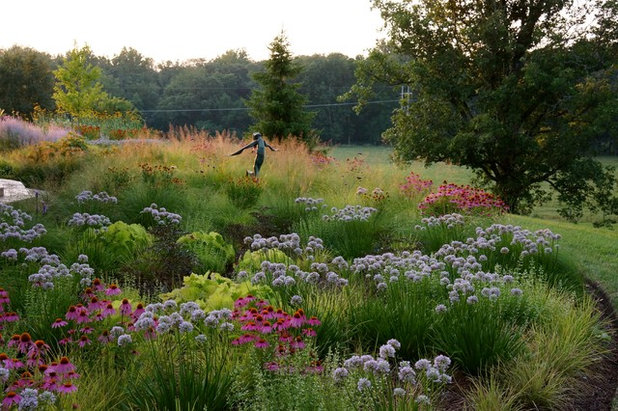
Adam Woodruff + Associates, Garden Artisans
This sculpture, by Thomas Yano, speaks to the child in each of us. Who doesn’t remember running through a field and experiencing jubilation in the process? The best art stirs emotions, memories and the imagination, which is implied movement at its best.
More: Get Your Garden Moving for a Magical Mood





